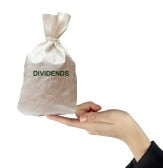Finding Yield in a Low-Rate Environment With Dividend-Paying Stocks
January 02, 2013

Where do you go to find yield in today’s low-rate environment? Think dividends. A growing number of companies pay dividends and offer attractive yields.
For today’s income-oriented investor, it’s been a frustrating time. Yields on US Treasury bonds, as well as investment-grade municipal and corporate bonds have hovered near historical lows. Even longer-term issues remain in the doldrums; rates on 30-year Treasuries have not topped 4% since October 2008
1
But for investors seeking income, there is an alternative: dividend-paying stocks. There are now 395 companies in the S&P 500 that pay dividends, and the average yield on these stocks has been rising since 2000. As of December 31, 2011, the average yield of a dividend-paying stock in the S&P 500 was 2.4%, compared with 1.9% for 10-year US Treasuries.
1
But there’s more to dividend-paying stocks than yield. The long-term benefits of dividends are significant:
•
Dividends are a key driver of total return. There are several factors that may contribute to the superior total return of dividend-paying stocks over the long term. One of them is dividend reinvestment. The longer the period in which dividends are reinvested, the greater the spread between price return and dividend reinvested total return.
•
Dividends help boost returns in down markets. Since 1926, dividends have accounted for over a third of the returns of the S&P 500. In down years, when price return is negative, dividends help offset the drop. Since 1926, dividends have provided an average return of 4.5% in all 12-month periods where the index declined, which helped offset the average price decline of 18.6%.
1
•
Dividend-paying stocks offer potentially stronger returns and lower volatility. Dividend-paying stocks have outperformed the broader market over time. Stocks with a history of increasing their dividend each year have produced higher returns with lower risk than non-dividend-paying stocks. For instance, since 1990, the S&P 500 Dividend Aristocrats--those stocks within the S&P 500 that have increased their dividends each year for the past 25 years--produced annualized returns of 11.04% versus 8.23% for the S&P 500 overall, with less volatility, as measured by standard deviation (14.14% versus 15.22%, respectively).
2
•
Dividends benefit from continued favorable tax treatment. The extension of the Bush-era tax cuts helps to reinforce the current case for dividend stocks. The tax bill passed in late 2010 extended the 15% tax on qualifying dividends and other forms of investment income through December 31, 2012. Because there are restrictions on the types of dividend income subject to the lower 15% rate, investors should consult a tax advisor to determine how tax laws apply to their situation.
•
Dividends are a sign of corporate financial health. Dividend payouts are often indicative of a company's financial health and management’s confidence in future cash flow. They are usually paid by mature businesses, and communicate a positive message to investors who perceive a long-term dividend as a sign of corporate strength.
The Growth of Dividend-Paying Stocks, 1950-2011

Dividend-paying stocks historically have demonstrated a performance edge. As this chart shows, an investor who invested a $1,000 portfolio consisting of the dividend-paying stocks within the S&P 500 in 1950 and reinvested all the dividends would have amassed in excess of $500,000 more than an investor with a portfolio of non-dividend-paying stocks within the index.
Source: Standard & Poor’s. Stocks are represented by the S&P 500, an unmanaged index considered representative of the broad US stock market. For the period January 1, 1950, through December 31, 2011. Past performance is not indicative of future results. Investors cannot invest directly in any index.
Keep in mind that like any stock, dividend-paying stocks can lose money, and there is no guarantee that dividends will be paid in the future. But for investors seeking current income or an income-producing alternative to diversify a portfolio, dividend-paying stocks can be an attractive choice. Morgan Stanley can help you find dividend-paying stocks that suit your portfolio.
Equity Securities’ prices may fluctuate in response to specific situations for each company, industry, market conditions, and general economic environment.
Morgan Stanley, its affiliates and Morgan Stanley Financial Advisors do not provide tax advice. Individuals are urged to consult their tax advisor regarding their own tax or financial situation before implementing any strategies.
1Sources: Standard & Poor’s; The Federal Reserve, Selected Interest Rates (Daily) – Report H.15.
2Source: Standard & Poor’s. The S&P 500 Dividend Aristocrats index measures the performance of all stocks within the S&P 500 that have increased their dividends each year for the past 25 years. Stocks are represented by the S&P 500, an unmanaged index considered representative of the broad US stock market. For the period January 1, 1950, through December 31, 2011. Past performance is not indicative of future results. Investors cannot invest directly in any index.
Notices & Prohibitions:
The Morgan Stanley Legal and Compliance Department has approved this article for use exactly as it appears. It may not be changed in any way. However, longer articles may be run in two or more parts as long as any disclaimers also appear in the respective parts. Please note that the non-solicitation clause must appear at the end of every article.
Finding Yield in a Low-Rate Environment With Dividend-Paying Stocks
Courtesy of: El Camino Group at Morgan Stanley, Angel Chavez, CIMA®, Financial Advisor
Branch Name: Morgan Stanley San Francisco, CA
Phone Number: 415-984-6008
Web Address: www.morganstanleyfa.com/elcaminogroup/
If you’d like to learn more, please contact Angel Chavez, CIMA®, 415-984-6008.
Article by McGraw Hill and provided courtesy of Morgan Stanley Financial Advisor.
The author(s) are not employees of Morgan Stanley Smith Barney LLC ("MSSB"). The opinions expressed by the authors are solely their own and do not necessarily reflect those of MSSB. The information and data in the article or publication has been obtained from sources outside of MSSB and MSSB makes no representations or guarantees as to the accuracy or completeness of information or data from sources outside of MSSB. Neither the information provided nor any opinion expressed constitutes a solicitation by MSSB with respect to the purchase or sale of any security, investment, strategy or product that may be mentioned.
Morgan Stanley Financial Advisor(s) engaged to feature this article.
Angel V. Chavez may only transact business in states where he is registered or excluded or exempted from registration www.morganstanleyfa.com/elcaminogroup/. Transacting business, follow-up and individualized responses involving either effecting or attempting to effect transactions in securities, or the rendering of personalized investment advice for compensation, will not be made to persons in states where [Name] is not registered or excluded or exempt from registration.
Investments and services offered through Morgan Stanley Smith Barney LLC, member SIPC.
CRC 498648 (05/12)
Leave a comment
Comments will be approved before showing up.





